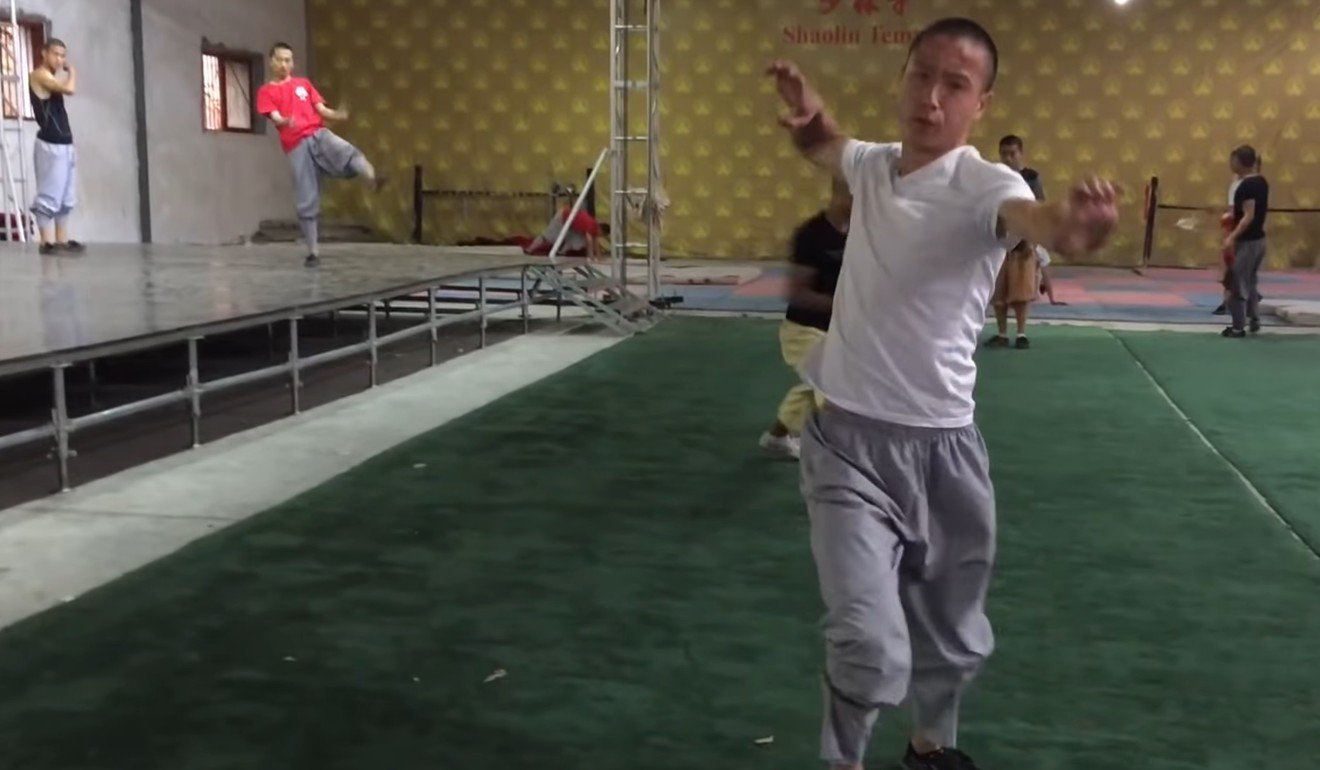
A popular YouTuber who spent three years training with the monks at the Shaolin Temple has debunked several inaccuracies in a BBC documentary that has gone viral.
The BBC travelled to the Shaolin Temple in China for episode one of its new Sacred Wonders series. It also uploaded an eight-and-a-half minute clip to YouTube titled “The extraordinary final test to become a Shaolin Master” focusing on a Buddhist monk named Yandian.
The documentary says Yandian will face a test to qualify as a full warrior monk, with the film following his training. It says he has been practising with the monkey stick weapon for 11 years, but still struggles with one move, the “Monkey Going Up The Tree”.
“When I was at Shaolin he [Yandian] was already a master and teaching huge groups of people. His speciality was the monkey stick,” says YouTuber Ranton, who dissected the documentary in his own video.
Ranton says young monks can decide when they turn 18 whether to become a full-on monk or a full-on warrior monk.
“But I’ve never seen a test like this,” he says. “And this guy [Yandian] has been a warrior monk for a long time already. Everybody knows how good he is in the Temple. This might just be a narrative for the camera.”
Yandian tells the camera he will feel he has let himself down badly if he does not pass his test.
“The monks do have a lot of media experience. Camera teams are there at least every month,” Ranton says. “I’m not saying they told them word for word what to say. but if you speak Chinese you can clearly see he is saying what he is supposed to be saying.
“Everyone who’s involved with the temple to a deeper degree knows what to say to the cameras, to sell it. They’re great people, but again nobody talks like that.”
The narrator says Yandian will have to prove himself before a panel of senior monks. If he fails it will be 13 years before he can try again. “Shaolin in China is all about who knows who. That guy does not have to wait for anything,” Ranton says.
In one scene, Yandian receives words of advice from his supposed mentor, Yancen.
“Mentor? What? So obviously in Shaolin Temple and in China in general, age is very important. So senior people tell you what to do and how to behave. So he does have to listen to him, but he is not his personal mentor, there’s no such thing. He’s just a senior monk but they’re both already masters. They’re brothers essentially, they’re warrior monk brothers,” Ranton says.

Yancen tells Yandian he is struggling to do the move well because of “what is inside – your mind is not at peace”.
“Real talk again, most warrior monks rarely ever meditate. Sorry,” Ranton says.
“This is not how kung fu is ever taught when the cameras are off. There’s only beatings and yelling. Talking about what’s in your heart and mind, you might have that after your training when you sit down with your master and you drink some tea, then they tell you this, but not during your training.”

The narrator says that the abbot, who is the head of the temple, will be judging Yandian along with three senior monks. Yancen is allowed to watch from the sidelines. “This makes no sense. Yancen is just like the other guys. They are senior warrior monks. One of them was my master for 4 months,” Ranton says.
“This is a very cool scene but I’ve never heard or seen anything this formal take place. Why would they test his skill when everybody knows how good he is, and why is the abbot there? He has plenty of other things to do. If somebody from outside wants to join the warrior monks, there’s one senior monk who comes and checks it out, in the training hall, no need for all these formalities.
“It’s a very beautiful, cathartic scene at the end here but no one sits in this hall, no one chills there. This is just for the camera.”

The documentary also claims that the Shaolin Temple became world famous as the home of kung fu after being discovered by Hollywood 50 years ago.
But, as Ranton points out, it was Hong Kong cinema that made Shaolin big again, not Hollywood, in particular Shaolin Temple (1981) starring Jet Li and The 36th Chamber of Shaolin (1978).
The YouTuber also disagreed with the film’s statement that kung fu is not just a martial art, but a spiritual practice.

“That highly depends on the person practising it,” he says. “I have met plenty of people at Shaolin who train like crazy and actually separate it from the spiritual aspects. Even monks. One of my masters would never talk about anything spiritual. He would always say Shaolin for him meant war.
“Shaolin means so many different things to so many people. Some monks really go heavy on that spirituality stuff, and some are just like, if you’re not actually learning how to fight, then you’re not learning kung fu.
“The whole aspect of spirituality happens right here [in your mind], you don’t talk about it.”

The documentary says that the Shaolin Temple is a sacred place in Buddhism. Ranton agrees in that it is the origin of Zen Buddhism but says that the vast majority of warrior monks are not that well-read or even interested in Buddhist scripture.
He also points out that the monks would never actually train in some of the areas that the film shows them practising in.
“We would never train there,” he says about one area. “This is in the middle of the Temple, this is part of the area that is sprawling with tourists throughout the day so you can’t really walk there. This was locked down for the camera team. We trained in the training halls which are outside the tourist areas. But, it looks cool.”







